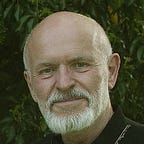Paris 1940–1944
Martha Gellhorn, Django Reinhardt, Maurice Chevalier, Samuel Beckett, Ernest Hemingway, Picasso, and more…
Life in Paris, between 1940–44, seemed, on the surface, to go on as usual, with The Moulin Rouge, and the Folies Bergere, along with most of the other clubs, bars, and restaurants — plus the swank stores and boutiques — open and doing good business.
International French singing stars such as Maurice Chevalier, Edith Piaf, and jazz musician Django Reinhardt, had decided to remain in the city and perform in front of German audiences. Contradictions on every corner, in every home.
Most people wisely kept their heads down and got on with life and resistance.
Chevalier found it a hard choice to stay in Paris. He could easily have skipped across to England, but he stayed in the city he loved and said damn to the consequences, and if one studies his performances of those years, they are examples of an angry sophisticated, smiling defiance which the Nazi German officer class, in their rigid, self-righteous frame of mind, never saw or understood. But it could easily have cost him his life, especially after singing on German radio. It was part denial, part defiance, and a great…
